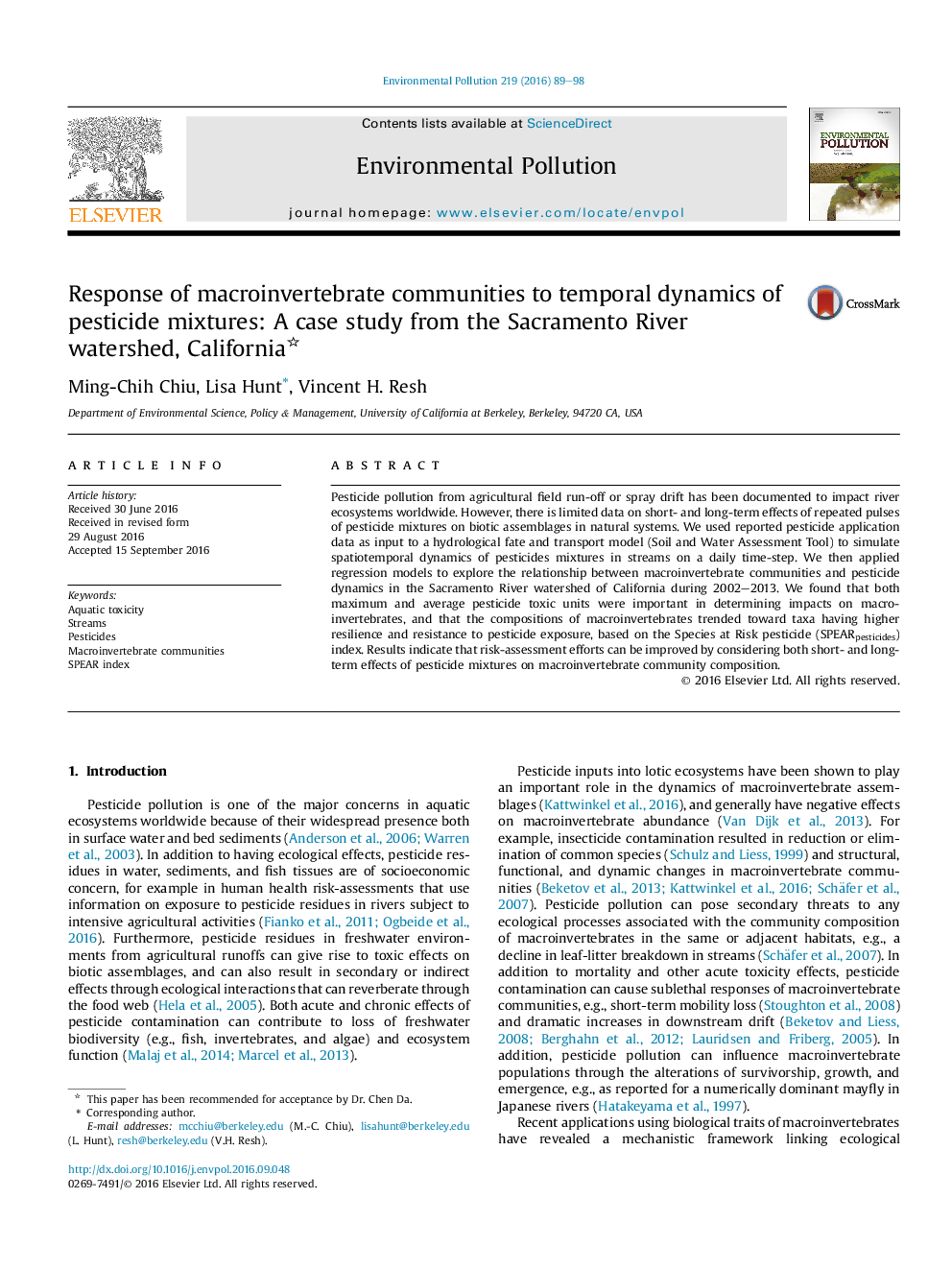| Article ID | Journal | Published Year | Pages | File Type |
|---|---|---|---|---|
| 4424246 | Environmental Pollution | 2016 | 10 Pages |
•The Species at Risk (SPEAR) pesticide bioassessment index was adapted for a California watershed.•Spatially and temporally explicit pesticide application data were linked to changes in stream invertebrate communities.•Both peak and average exposure levels were important in determining community-level responses.•The composition of macroinvertebrates trended toward taxa having higher resilience and resistance to pesticide exposure.•Risk-assessment efforts can be improved by considering both the short- and long-term effects of pesticide mixtures.
Pesticide pollution from agricultural field run-off or spray drift has been documented to impact river ecosystems worldwide. However, there is limited data on short- and long-term effects of repeated pulses of pesticide mixtures on biotic assemblages in natural systems. We used reported pesticide application data as input to a hydrological fate and transport model (Soil and Water Assessment Tool) to simulate spatiotemporal dynamics of pesticides mixtures in streams on a daily time-step. We then applied regression models to explore the relationship between macroinvertebrate communities and pesticide dynamics in the Sacramento River watershed of California during 2002–2013. We found that both maximum and average pesticide toxic units were important in determining impacts on macroinvertebrates, and that the compositions of macroinvertebrates trended toward taxa having higher resilience and resistance to pesticide exposure, based on the Species at Risk pesticide (SPEARpesticides) index. Results indicate that risk-assessment efforts can be improved by considering both short- and long-term effects of pesticide mixtures on macroinvertebrate community composition.
Graphical abstractFigure optionsDownload full-size imageDownload as PowerPoint slide
